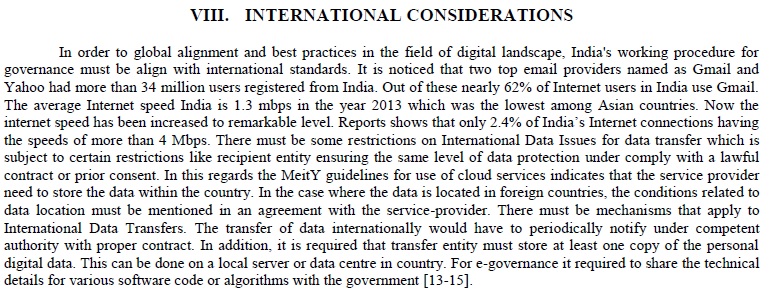Cyber Security and Data Privacy in the Era of E-Governance
DOI:
https://doi.org/10.54741/ssjar.4.1.2Keywords:
cyber security, data privacy, e-governance, digital personal data, cyber attackAbstract
E-Governance is known as electronic governance which is based on information and communication technologies (ICTs) at various levels of the government and the public sector using Internet and other related electronic device. It is an efforts made by the governments to improve relations with their citizens. However, there are various concerns that are related with it. A cyber security and data privacy are the major challenges in this regards. The Cyber Security is known as the security of information by communicating channels using computing devices. These devices may be computer network, smartphones and other related equipment. The Data privacy is termed as concern of the information privacy of a person shared with others with proper handling of sensitive data. These data can be personal data, confidential data of various sectors, government data, intellectual property data, etc. In order to execute good governance using E-Governance, there is a need for information security best practices. Data should be protected against cyber attracts. National and international framework should be work for concerns related to e-governance. There is a need for implement existing law and seeks to remedy that concern with cyber security. In this paper factors related to cyber security and data privacy for e-Governance have been addressed with administration and enforcement process, legal framework and national and international considerations.
Downloads
References
Kumar D, & Panchanatham N. (2014). Strategies rebooting the government in e-mode. Global Journal for Research Analysis, 3(8).
J. Satyanarayana. (2006). E-government. India: Prentice Hall.
Cyber Laws. (2013). http://indianrailways.gov.in.
E-Governance. (2013). http://en.wikipedia.org/wiki/E-Governance.
Holmes. (2003). Solutions come to those who wait. Times of India.
Kumar D, & Panchanatham. (2024). Strategies for effective e- governance management. International Journal on Global Business Management & Research, 3(1).
National Cyber Security Policy. (2013). http://deity.gov.in.
Saxena, K. B. C. (2004). Towards excellence in e-governance. in: Towards E-Government: Management Challenges, M P Gupta. (Ed.). India: Tata McGraw-Hill.
Yuchong Li, & Qinghui Liu. (2021). A comprehensive review study of cyber-attacks and cyber security; Emerging trends and recent developments. Energy Reports, 7, 8176-8186.
Kumar D, & Panchanatham N. (2015). Enforcing transparency in Indian e-governance through ICT. International Journal of Business Management & Research.
Kumar D, & Panchanatham N. (2015). A study on Cyber law in promoting e-governance. International Journal of Multidisciplinary Research.
Nir Kshetri. (2016). Cybercrime and cyber security in India: Causes, consequences and implications for the future. Crime, Law and Social Change, 66(3), 313–338.
https://www.meity.gov.in/content/draft-india-data-accessibility-use-policy-2022. Last Accessed February 25, 2023.
Usman Tariq, Irfan Ahmed, Ali Kashif Bashir, & Kamran Shaukat. (2023). A critical cyber security analysis and future research directions for the internet of things: A comprehensive review. Sensors, 23(8), 4117.
Peter Vrsansky, & Daniel Bednar. (2017) Cyber security and the international law. Bratislava Law Review, 1(2), 38-49.

Downloads
Published
How to Cite
Issue
Section
ARK
License
Copyright (c) 2024 Md. Asaad Raza

This work is licensed under a Creative Commons Attribution 4.0 International License.
Research Articles in 'Social Science Journal for Advanced Research' are Open Access articles published under the Creative Commons CC BY License Creative Commons Attribution 4.0 International License http://creativecommons.org/licenses/by/4.0/. This license allows you to share – copy and redistribute the material in any medium or format. Adapt – remix, transform, and build upon the material for any purpose, even commercially.










